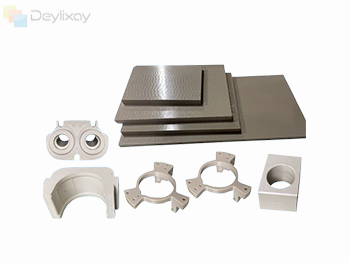בעולם של פלסטיק בעל ביצועים גבוהים, בחירת החומר המתאים היא קריטית להצלחה, לעמידות ולעלות-תועלת של הפרויקט שלך. שני חומרים שמגיעים לעתים קרובות ליישומים תובעניים הם PEEK (Polyetheretherketone) ו- Polyurethane Sheet. בעוד ששניהם מסווגים כפלסטיק, יש להם תכונות שונות בתכלית והם מתוכננים לאתגרים שונים.

מדריך מעמיק זה יספק השוואה ראש בראש בין יריעות פלסטיק PEEK לעומת יריעות פוליאוריטן. אנו נפרט את המאפיינים העיקריים, היתרונות, החסרונות והיישומים האופייניים שלהם כדי לעזור לך לקבל החלטה מושכלת.
חלק 1: הבנת המתמודדים
מה זה PEEK פלסטיק?
PEEK הוא תרמופלסטי בעל ביצועים גבוהים השייך למשפחת הפוליארילתרקטונים (PAEK). הוא ידוע כ"סופר פולימר" בשל תכונותיו המכניות, התרמיות והכימיות יוצאות הדופן. זה נחשב לעתים קרובות תחליף מתכת פרימיום בתעשיות כמו תעופה וחלל ורפואה.
מאפיינים מרכזיים:
עמידות בטמפרטורה קיצונית: שימוש מתמשך עד 480°F (250°C) וחשיפה לטווח קצר לטמפרטורות גבוהות בהרבה.
חוזק מכני יוצא דופן: חוזק מתיחה וחוזק כיפוף גבוה, אפילו בטמפרטורות גבוהות.
עמידות כימית יוצאת דופן: עמיד בפני מגוון רחב של כימיקלים, שמנים וממיסים, מה שהופך אותו לאידיאלי עבור סביבות קשות.
מעכב בעירה מטבעו: עומד בתקני דליקות מחמירים ללא צורך בתוספים.
עמידות בפני שחיקה ושחיקה מעולה:
תאימות ביולוגית: זמין בדרגות רפואיות המתאימות לשתלים ולמכשירים כירורגיים.
מה זה יריעת פוליאוריטן?
פוליאוריטן הוא פולימר שיכול להיות תרמופלסטי (TPU) או חומר תרמוסטי. בצורת גיליון, הוא ידוע בעיקר בזכות האלסטיות המדהימה, הקשיחות והעמידות בפני שחיקה והשפעה. זהו חומר רב תכליתי המגשר על הפער בין פלסטיק קשיח לגומיות רכות.
מאפיינים מרכזיים:
גמישות ואלסטיות מעולה: ניתן לניסוח במגוון רחב של רמות קשיות, מרכות וגמישות ועד קשיחות.
עמידות בפני שחיקה ועמידות בפני פגיעות יוצאת דופן: לעתים קרובות עולה על ביצועים רבים של פלסטיק ומתכות אחרים ביישומי שחיקה גבוהים.
עמידות בפני קרעים: עמידות גבוהה בפני קריעה וניקור.
עמידות טובה בשמנים ושמנים: מתפקד היטב בסביבות עם חומרי סיכה ונוזלים הידראוליים.
שיכוך רעש ורעידות: האופי האלסטי שלו סופג אנרגיה ומפחית רעש.
חלק 2: טבלת השוואה ראש בראש
נכס PEEK פלסטיק יריעת פוליאוריטן
סוג חומר תרמופלסטי בעל ביצועים גבוהים תרמופלסטי (TPU) או אלסטומר טרמוסיסט
חוזק מפתח חוזק בטמפרטורה גבוהה, קשיחות גמישות, שחיקה ועמידות בפני פגיעות
עמידות בטמפרטורה מצוינת (עד 250°C/480°F) טובה (בדרך כלל עד 80-120°C/175-250°F)
עמידות כימית מעולה נגד מגוון רחב טוב נגד שמנים ושמנים; הוגן נגד ממיסים
קשיות (Shore D) גבוהה מאוד (——85-95 D) טווח רחב (מ——60 A עד 80 D)
עמידות בפני שחיקה מעולה יוצאת דופן (לעיתים קרובות הבחירה הטובה ביותר)
עלות ראשונית גבוהה מאוד (חומר מובחר) בינוני עד גבוה (חסכוני עבור הנישה שלו)
קלות עיבוד שבבי
חלק 3: יתרונות וחסרונות
PEEK פלסטיק: הפרפורמר
יתרונות:
שומר על תכונות בטמפרטורות קיצוניות ובסביבות כימיות קשות.
יחס חוזק למשקל גבוה, אידיאלי לרכיבים מבניים.
ביצועים ויציבות לטווח ארוך מפחיתים את העלות הכוללת של בעלות ביישומים קריטיים.
חסרונות:
עלות גבוהה במיוחד - אחד הפלסטיקים ההנדסיים היקרים ביותר.
דורש טמפרטורות עיבוד גבוהות עבור הזרקה.
ניתן לעצב יתר על המידה עבור יישומים שאינם זקוקים לחבילת המאפיינים המלאה שלו.
יריעת פוליאוריטן: סוס העבודה הקשוח והגמיש
יתרונות:
עמידות בפני שחיקה ופגיעה ללא תחרות בתרחישים רבים.
צדדיות בקשיחות ובצורה מאפשרת התאמה אישית.
מצוין לשיכוך רעשים, רעידות והלם.
חסכוני יותר מ-PEEK עבור יישומים ספציפיים לבלאי.
חסרונות:
הורד את טמפרטורת השירות המקסימלית.
יכול להיות רגיש לממיסים וחומצות מסוימות.
דרגות רכות יותר עשויות להיות קשות לעיבוד נקי.
חלק 4: יישומים נפוצים - איפה הם זורחים
שימושים טיפוסיים של PEEK פלסטיק:
תעופה וחלל: תותבים, כלובי מיסבים, בידוד תיל באזורי טמפ' גבוהה.
רפואי: כלובי היתוך עמוד השדרה, נקודות ריפוי שיניים, ידיות למכשירים כירורגיים.
שמן וגז: אטמים, טבעות גיבוי, חלקי מדחס לכלים למטה.
מוליכים למחצה: נושאי רקיק, רכיבים קריטיים בחדרים נקיים.
רכב: חלקי הילוכים, רכיבי מגדש טורבו (החלפת מתכת).
שימושים טיפוסיים של יריעת פוליאוריטן:
מכונות תעשייתיות: ספינות עבור מצנחים, הופרים ומיטות משאיות מזבלה לעמידה בפני שחיקה.
טיפול בחומרים: מסועים, רולים ורצועות בלאי.
רכב: תותבי מתלים, אטמים ורפידות בלאי.
כרייה ובנייה: מחצלות מסך, אטמים ואטמים הידראוליים.
ייצור כללי: קוביות חיתוך, ג'יגים ומתקנים.
חלק 5: מדריך קנייה: כיצד לבחור את החומר הנכון
שאל את עצמך את השאלות הקריטיות האלה כדי לקבוע אם PEEK או פוליאוריטן הם המתאימים ביותר לצרכים שלך:
1. מהי טמפרטורת הפעולה?
מעל 120°C (250°F): PEEK היא הבחירה הברורה ולעתים קרובות היחידה.
מתחת ל-120 מעלות צלזיוס (250 מעלות צלזיוס): פוליאוריטן הופך לאופציה מעשית ולעתים קרובות חסכונית יותר.
2. מהי הדרישה המכנית העיקרית?
קשיחות, חוזק מבני ויציבות ממדית תחת עומס/חום: בחרו ב-PEEK.
גמישות, ספיגת פגיעות או עמידות בפני שחיקה (למשל, גרידה/החלקה): בחר פוליאוריטן.
3. מהי הסביבה הכימית?
עמידות כימית רחבה, במיוחד נגד ממיסים אגרסיביים: PEEK עדיפה.
עמידות בפני שמנים, שומנים ונוזלים הידראוליים: שניהם מצוינים, אבל פוליאוריתן עשוי להיות הבחירה החסכונית יותר.
4. מה התקציב שלך?
הביצועים הם קריטיים, ללא קשר לעלות: PEEK מוצדקת עבור מכשירים רפואיים מצילי חיים או רכיבי תעופה וחלל קריטיים למשימה.
עלות-תועלת עבור יישום קשוח: פוליאוריטן מספק ערך יוצא דופן, במיוחד בתרחישי שחיקה גבוהים שבהם הקשיחות שלו עולה על חומרים רבים אחרים.
מסקנה: זה בערך הכלי הנכון לתפקיד
הבחירה בין PEEK לפוליאוריתן אינה קשורה לחומר "טוב יותר" במובן מוחלט, אלא איזה חומר מתאים ליישום הספציפי שלך.
בחר PEEK Plastic כאשר היישום שלך דורש שילוב בלתי מתפשר של עמידות חום קיצונית, חוזק מכני גבוה ואינרטיות כימית. תחשוב על זה כעל "מכונית המירוץ F1" של פלסטיק - בעל ביצועים גבוהים להפליא עבור הסביבות התובעניות ביותר.
בחר יריעת פוליאוריטן כאשר האתגרים העיקריים שלך הם שחיקה, פגיעה, קריעה והצורך בגמישות. זוהי "משאית השטח הבלתי ניתנת להריסה" — שנבנתה לעמוד בתנאים הקשים ביותר, המענישים ביותר מבלי לשבור את הכיס.
על ידי הערכה קפדנית של הדרישות שלך מול החוזקות של כל חומר, אתה יכול לבחור את הפלסטיק בעל הביצועים הגבוהים האופטימליים המבטיחים אמינות, אריכות ימים וערך עבור הפרויקט שלך
 English
English Español
Español Portugues
Portugues Pусский
Pусский Français
Français Deutsch
Deutsch 日本語
日本語 한국어
한국어 العربية
العربية Italiano
Italiano Nederlands
Nederlands Ελληνικά
Ελληνικά Svenska
Svenska Polski
Polski ไทย
ไทย Türk dili
Türk dili हिन्दी
हिन्दी Indonesia
Indonesia Melayu
Melayu Tiếng Việt
Tiếng Việt dansk
dansk Magyar
Magyar қазақ
қазақ বাংলা
বাংলা မြန်မာ
မြန်မာ українська
українська norsk
norsk Gaeilge
Gaeilge Română
Română ພາສາລາວ
ພາສາລາວ Filipino
Filipino Suomalainen
Suomalainen slovenský
slovenský o'zbek
o'zbek Igbo
Igbo Hrvatski
Hrvatski Zulu South Africa
Zulu South Africa Afrikaans isiXhosa
Afrikaans isiXhosa lëtzebuergesch
lëtzebuergesch тоҷикӣ
тоҷикӣ नेपाल
नेपाल Eesti
Eesti Yoruba
Yoruba Монгол
Монгол ខ្មែរ
ខ្មែរ 中文(繁体)
中文(繁体) Afrikaans
Afrikaans












 טֵלֵפוֹן
טֵלֵפוֹן
תגובה
(0)